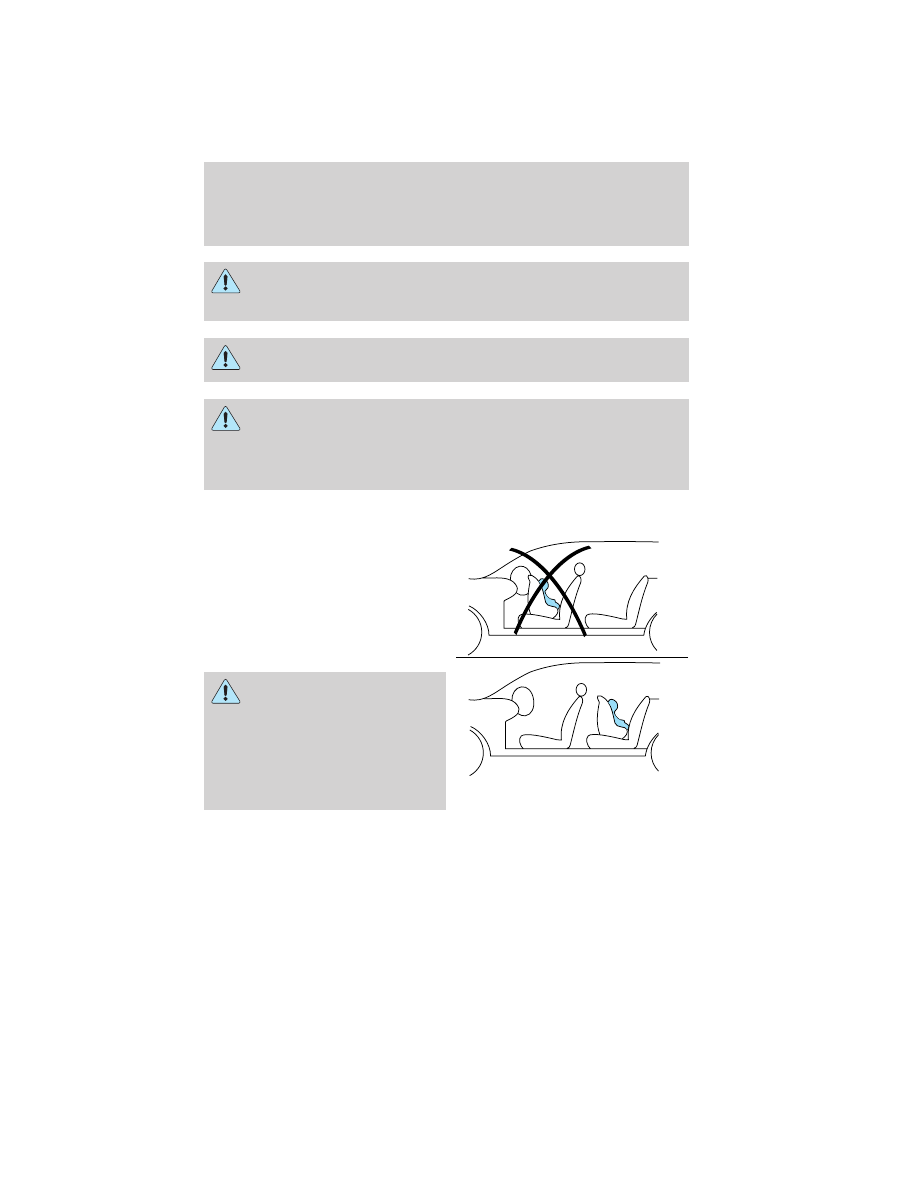Ford Crown Victoria (2010 year). Manual - part 28

WARNING: Do not attempt to service, repair, or modify the
airbag supplemental restraint systems or its fuses. See your
authorized dealer.
WARNING: The front passenger airbag is not designed to offer
protection to an occupant in the center front seating position.
WARNING: Modifying or adding equipment to the front end of
the vehicle (including frame, bumper, front end body structure
and tow hooks) may affect the performance of the airbag system,
increasing the risk of injury. Do not modify the front end of the
vehicle.
Children and airbags
Children must always be properly
restrained. Accident statistics
suggest that children are safer when
properly restrained in the rear
seating positions than in the front
seating position. Failure to follow
these instructions may increase the
risk of injury in a collision.
WARNING: Airbags can kill
or injure a child in a child
seat. NEVER place a rear-facing
child seat in front of an active
airbag. If you must use a
forward-facing child seat in the
front seat, move the seat all the
way back.
Seating and Safety Restraints
113
2010 Crown Victoria (cro)
Owners Guide, 2nd Printing
USA (fus)